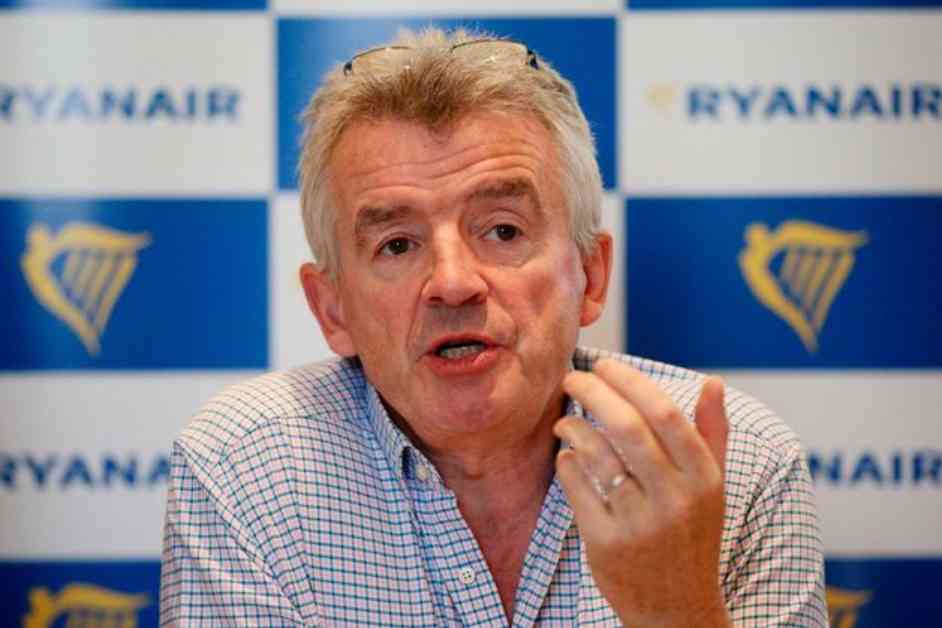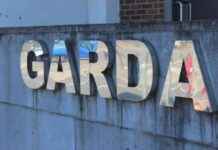Ryanair CEO Warns of High Holiday Travel Costs between Dublin and London
Holiday travelers hoping to fly from Dublin to London this Christmas may be in for a shock as Ryanair CEO, Michael O’Leary, has issued a warning about potentially skyrocketing one-way fares. O’Leary revealed that due to restrictions on flight and passenger numbers, the cost of a one-way ticket on this popular route could reach up to €500, double or even triple the usual price.
Concerns Over Slot Limitations and Passenger Reductions
The escalating fares are a result of the ongoing dispute between Ryanair and Dublin Airport regarding the allocation of flight slots and passenger numbers. O’Leary disclosed that despite applications for additional slots being submitted by Ryanair and other airlines for the holiday season, they were denied by the Irish Aviation Authority (IAA). This denial has led to a shortfall in available slots, forcing airlines to increase fares to compensate for the limited capacity.
In a recent interview on RTÉ’s Morning Ireland program, O’Leary expressed his frustration, stating, “We run about 270,000 extra slots at Christmas time every year just to keep fares down. We can’t run those extra slots… therefore the fares this Christmas will be double or triple.” He went on to predict that one-way fares between Dublin and London could reach as high as €500, a significant increase from the usual prices.
In addition to the challenges faced during the upcoming holiday season, O’Leary highlighted a letter received from the IAA on August 14, which informed him of a projected reduction of one million passengers at Dublin Airport in the following year. This reduction has raised concerns about the impact on the aviation industry and the economy as a whole.
Bureaucratic Challenges and Traffic Cap Controversy
The response from the IAA regarding the reduction in passenger numbers has been met with criticism from O’Leary, who described it as “bureaucratic waffle.” He pointed out that the current traffic cap of 32 million passengers at Dublin Airport, imposed in 2007, is outdated and no longer relevant. O’Leary emphasized that the recent approval for a second runway by Fingal County Council, which would increase passenger capacity to 60 million, contradicts the existing cap.
The CEO of Ryanair argued that the tourism industry in Ireland is being hindered by outdated regulations, specifically the 17-year-old traffic cap that restricts growth and development at Dublin Airport. He criticized the lack of progress in lifting these restrictions, citing the inefficiency of the Transport Minister in addressing the issue.
O’Leary challenged the notion that traffic congestion was a valid concern, pointing out that public transport usage to access Dublin Airport has increased significantly over the years. He emphasized the need for increased capacity to accommodate the growing demand for air travel and support the expansion of the aviation sector.
Implications for Future Growth and Development
The limitations imposed on Dublin Airport have far-reaching implications for the aviation industry and the economy of Ireland. O’Leary highlighted the potential for new routes and increased passenger traffic if the restrictions were lifted, underscoring the missed opportunities for growth and development in the sector.
Despite efforts to address the challenges faced by airlines, including proposals to remove the restrictions and increase capacity, the process is expected to take several years to materialize. This delay raises concerns about the impact on the competitiveness of Irish airports and their ability to meet the growing demand for air travel.
Subheadings:
Impact of Slot Limitations on Holiday Travel Costs
Challenges in Addressing Traffic Cap Restrictions
Opportunities for Growth and Development in the Aviation Sector
Opportunities for Growth and Development in the Aviation Sector
In conclusion, the warning issued by Ryanair’s CEO regarding the high cost of holiday travel between Dublin and London highlights the need for a comprehensive review of existing regulations and capacity limitations at Dublin Airport. Addressing these issues is crucial to supporting the growth and sustainability of the aviation industry in Ireland and ensuring affordable and accessible air travel for passengers.












